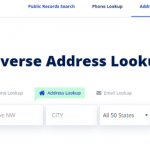Can you digital footprint be at risk to hacker attacks? When you are using the internet, you leave behind a digital trail. Consider it to be just like the payments and movements you make around your day to day life – you leave recorded activity behind.
Your digital footprint can be made up of social media activity, web browsing and information regarding your mobile use, what images and videos you download up or upload to the internet. Digital footprints can put your privacy at risk, especially when cyber attacks and hackers are rifer on the web.
Hacker attacks are common, with 66% of users experiencing one in the past twelve months, according to one survey. It seems that attacks are becoming more targeted and digital footprints are a way to track down those vulnerable to cyber crimes.
In this article, you’ll get a better understand of how cybercrime can be risky to your business and it’s digital footprint. We’ll look at preventative measures that can be put in place to hopefully prevent you, your employees or customers from falling victim.
Table of content:
- What type of cyber attacks exist?
- How hackers utilize your digital footprint
- Tips for prevent hackers and cyber attacks from happening
What type of cyber attacks exist?
There are a growing number of cyber attacks that are becoming increasingly concerning for businesses. Let’s explore a few of the common types that are used mostly to try and scam businesses.
Phishing attacks
This is a common one when it comes cyber scams and it infiltrates via email. The scammer will pose as a legitimate email address but include malicious links or attachments that the user might click on thinking it’s safe to do so.
Most businesses have email address and multiple users under the one server, meaning it’s a common avenue for hackers to utilize.
Password attacks
Passwords are quite possibly the most vulnerable form of security for a business, especially if employees are being quite lax in their attempts to change their passwords regularly.
With 90% of passwords being vulnerable to attack, it’s easy enough for a hacker to find one of those vulnerable users within your business and have access to company information.
Internet of Things (IoT) Attacks
Any devices that are linked up to an internet connection are subject to potential hackers. From security surveillance to smart thermometers, they can also be used as a gateway to a company’s confidential data. Coined as IoT attacks, these are fast becoming a popular option to hack businesses across the globe.
How hackers utilize your digital footprint
What is a digital footprint? It’s information that exists on the internet about a particular person or organization and their online activity. There are a variety of different things that contribute to the your digital footprint. Your email address for one, any purchases you’ve made on the internet and stored data that you have through various softwares and accounts online.
The bigger your digital footprint, the more of a threat that you become. Let’s look at how hackers will utilize the information that makes up a digital footprint.
- Passwords – A hacker can take advantage of a password that’s recently been breached or is part of a data leak to gain access to other accounts you own.
- Email addresses – The identification of the person behind an email dress can be used to target the email itself in an attempt to infiltrate the account and get access to confidential information of all kinds.
- Online browsing – Any employees that browse online for work or personal use, can also be subject to hackers who may time their attempts to get the user at a vulnerable moment where they might be exchanging information.
Just like fraudsters in real life, it can be easy enough to track an employee’s movements online and to find the ideal scenario in which they can exploit them. It’s why many companies have introduced company policies when using the internet and ensuring the right training is given.
Tips for preventing hackers and cyber attacks from happening
Every business has the opportunity to prevent hackers from stealing information and potentially causing irreparable damage. Here are some top tips that we’d recommend you implement when it comes to your business avoiding cyber attacks and hackers alike.
- Only gather information that’s necessary from your customers.
Due to GDPR and other data policies coming into play over the last several years, businesses have to be extremely careful on how they gather, store and use the data they collect from customers. Consent is very important for customers and businesses that use their data. Understanding how to collect this data can be found in this guide to consent management.
As a business, you’d be best advised to only gather the information you need and that’s absolutely necessary for your business to have. The more data you have stored, the more of a target you have on your company’s back. Be wary of what you’re asking for and when you can get rid of information and data you no longer require.
- Train your employees to be aware of cybercrime and hacker methods.
Your employees are a very important part of keeping your business secure. They make up part of your digital footprint, so you want to be vigilant when it comes to keeping them safe too.
Training your employees can prove very helpful to ensure they don’t fall victim to a hacker attack. With 95% of cybersecurity breaches being caused by human error, it’s necessary to provide regular training for your employees so that they’re recognizing common cybercrime attacks as well as methods used by hackers in this modern day.
With the methods changing year in, year out, it’s good to have annual training where possible.
- Introduce the right tools and software that keeps your data secure.
Another important factor to consider when it comes to your software is that everything is up to date and secure. Not all of your software or tools might be remembered when it comes to running regular updates, installing security patches, etc.
Having the right system in place like a software asset management tool is key to ensure everything you’re using as a business is secure and not vulnerable to hacking. You may find this guide to SAM software and tools useful in order to get a system that encompasses everything you need to protect your business.
Make sure that when you’re looking at introducing new software or tools to your business, particularly when they’re online-based, that they have all the relevant security and encryptions implemented.
- Create or update your internet policy within the workplace.
An internet policy is a go-to for many businesses who want to set out clear instructions for employees to use the web safely when in the workplace. These internet policies not only warn employees of the dangers online but it can hold those accountable for being reckless with the way they use the internet.
There are also certain security softwares that you can introduce that block certain websites from being used. Something that more businesses are doing to help combat the threat of hackers. If you’ve never created an internet policy before, there are plenty of online tools and templates to make use of – you can find some free templates here.
- Stay on top of security protocols and systems that are currently in place.
Security is a big one for any business, regardless of it’s size. Hackers are discriminatory and will do anything they can to exploit the vulnerable online. Whether they’re part of a major corporation or not, if there’s a vulnerable spot that they can enter, they’ll do so.
With that in mind, it’s important to stay on top of security protocols and any current systems that you have in place. Look at the antiware software that you’ve got installed onto your desktops and be sure that your servers are well protected from any opportunities that hackers may have to steal data.
Be sure you’re conducting regular back-ups and your business data and that data backup is being stored ideally off-site. That can help in scenarios where a data breach or virus might be in the process of occurring. It’s also worthwhile to outsource to an IT management service if you are lacking the internal employees. Security isn’t one you want to be lax on as a company.
Don’t let your digital footprint put you at risk from hacker attacks
As a business, there are plenty of risks online and when it comes to your digital footprint, it can be influential to the safety and security of your business. With this in mind, make sure you’re doing everything possible to stop hacker attacks from taking advantage of the contents that make up your digital footprint in 2022 and beyond.




